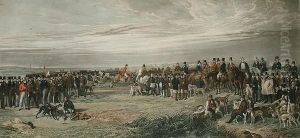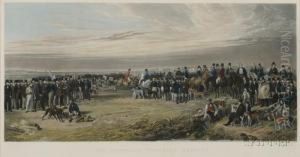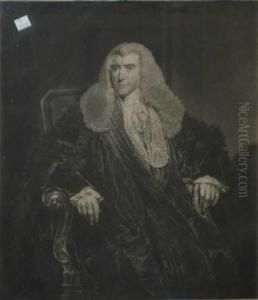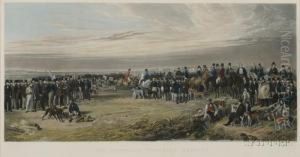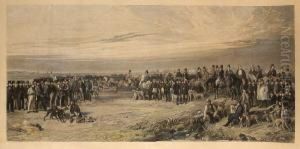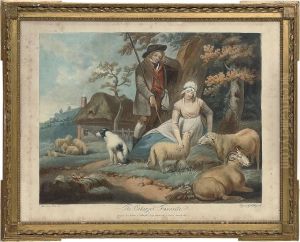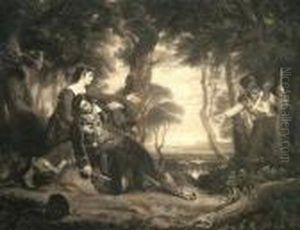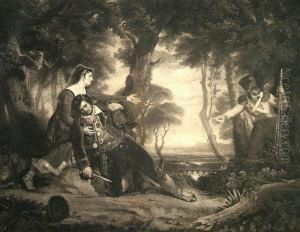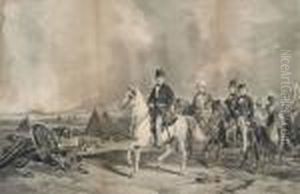Samuel William Ii Reynolds Paintings
Samuel William Reynolds II was a distinguished British mezzotint engraver and portrait painter born on July 4, 1794, in London, England. He was the son of Samuel William Reynolds I, who was also a notable mezzotint engraver. Reynolds II followed in his father's footsteps, embracing the same profession and achieving significant acclaim for his work.
During his lifetime, Reynolds II contributed to the field of printmaking and engraving, a form of intaglio printmaking that was particularly popular in England during the 18th and 19th centuries. Mezzotint is known for its rich tones and subtle gradations of light and dark, which made it an ideal medium for reproducing the tonal range of oil paintings. Reynolds II developed a reputation for his masterful reproductions of works by renowned artists such as Sir Joshua Reynolds, J.M.W. Turner, and Thomas Gainsborough.
Reynolds II was not just an engraver but also an accomplished painter, though it is his mezzotint engravings that have mostly survived to earn him lasting recognition in the art world. His engravings were highly sought after by collectors of the period for their quality and fidelity to the original paintings. His skill in capturing the essence and subtleties of the original works made his prints stand out in the competitive market of art reproductions.
Apart from his artistic achievements, Reynolds II played a part in the broader cultural milieu of his time. He was a contemporary of many significant artists and was part of a vibrant artistic community in Britain. The early 19th century was a period of great change and innovation in the arts, and mezzotint engraving was an integral part of that evolution, particularly in the way art was reproduced and disseminated to a broader public.
Samuel William Reynolds II continued to work and contribute to the arts until his death on August 24, 1872. His legacy is preserved in the numerous prints that continue to be appreciated by art enthusiasts and collectors, as well as in the collections of various museums and galleries around the world. His work remains a testament to the skill and artistry of mezzotint engravers of the 19th century.
